Student Blog
School/Life Balance
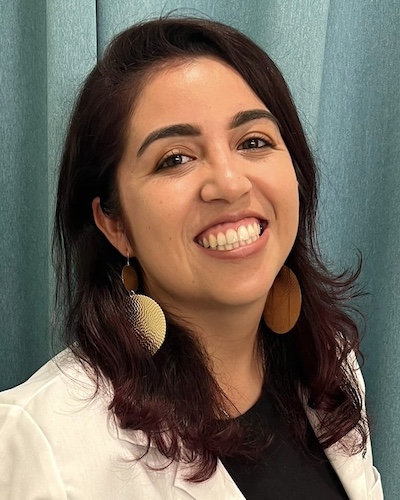
My road to OT and its many detours ⟩
September 15, 2022, by Tania
Admissions Diversity First-Gen School/Life Balance
Growing up, education was always seen as a privilege. I knew I needed to do something with my life but never knew exactly what that could be.
So, I decided to fully explore everything I was ever interested in because what better way to spend my 20s? I tried EMT, but the gender dynamics and the low pay made me run away quickly. I tried CNA in an attempt to be an RN, but the burnout is real. I moved to an oncology lab, but the hyper fixation of looking at cells didn’t last too long. My all-time favorite was working at a morgue performing autopsies, but to my surprise, I do enjoy working with people who are alive. Then I decided to be an internship and career advisor but reading resumes and talking to different corporations entail long working hours. I also created a small business decorating sugar cookies, but I had to pause because the repetitive movements of piping exacerbated my carpal tunnel pain. Finally, I was a university counselor and while I enjoyed helping students navigate higher education, something was missing. I loved all my previous jobs but none of them fully cover what I was looking for. I thought to myself if only there was one career that could allow me to be in health care, allow me to be creative, and allow me to teach . . .
It wasn’t until my grandfather had hip replacement surgery that I learned about OT. As his medical director, I approved an occupational therapist to come over for a home visit. The OT came over and guess what was the first thing she pointed out during the inspection? If you thought RUG, then you are correct! The rug in the living room was a tripping hazard. As she inspected the home, I took the opportunity to have a conversation with her about her job. I remember her saying “think of OT as a combination between a doctor and a teacher.” My brain immediately lit up! Oh, what! my two favorite professions in one? She had very convincing arguments regarding having a profession in OT because well here I am today. I am so glad for my journey because finding what you love and loving what you do is amazing.
I know the pressure of needing to figure life out, especially as a first-generation student, but I am here to tell you that taking a break in between undergrad and graduate school is fine, changing careers is fine, not getting all A’s in school is fine, and not knowing what specific area of OT you want to work in is fine! Don’t place extra stress on yourself thinking that you must figure every single detail out. I’ll let you in on a secret, no one has everything figured out in life, some are just better at pretending!
First-year students, you will have the next few years to decide what you would like to focus on and second-year students you will have your career to figure that out. Give yourself grace because being in grad school at USC is already stressful enough.
⋯
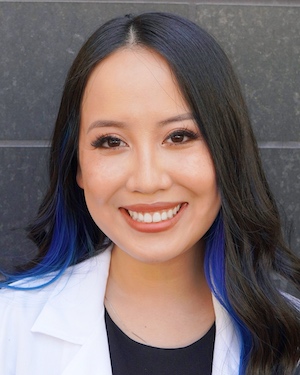
Are You New Here? ⟩
April 7, 2022, by Teresa
Getting Involved School/Life Balance
Yeah? Thinking about what you want your time here to look like? Then this one’s for you.
Growing up, I was that kid–the ASB, class president, honor society, involved in anything and everything type of kid. In undergrad, I took the complete opposite approach: focused my efforts on academics and dedicated any remaining time to a select few organizations I felt truly passionate about. Going into this program, I knew I wanted to maximize my two years here but was still figuring out what that meant and how it would be affected by . . . well, let’s just call them unprecedented times for old time’s sake.
I’ve held several roles in several student groups and programs here, including this one as student ambassador. I came into all of them during these infamous times and with that came a unique set of challenges, as I’m sure many of my fellow student leaders can relate to. So as I step out of my formal roles, here are some questions I’ve frequently gotten . . .
- How do I know what to get involved with? Obviously, the answer to this varies person to person. For me, I chose to get involved with things I felt aligned with my personal values, experiences, and goals which include advocacy, working with underserved communities, and mentorship. Identifying these are important because 1) no one can ever take their importance away from you and 2) they can be used to ground yourself if you ever lose sight of why you started the work in the first place. Working toward things you care about is always going to be a stronger motivator than doing things only because it’s what you think you’re supposed to be doing. This is not to say that you can only get involved with something you have a personal stake in. You can still be a strong ally, leader, and resource as long as you’re committed to putting in the work to understand and uplift larger causes.
- When should I get involved? With how short this program is, it may feel tempting to hit the ground running and take on everything all at once. Take the entire first semester to focus on school and establish a strong foundation so that you’re better able to gauge how much more you can take on. Take on more slowly over time if you are willing and able, but recognize your limitations. Becoming a leader is realizing that you are but a small, yet mighty, cog in a much larger machine. If you are no longer working, the entire system doesn’t work and the cause you serve pays the price. That being said, being proactive and reaching out to student organizations early doesn’t hurt! However, they will certainly provide you with more information to get involved when the time comes.
- What about the things I struggle with? They are inevitable growing pains, which hopefully subside as you progress and develop into your role(s). Be committed to receiving and applying feedback and getting out of your comfort zone. For me, this was role delegation and for several reasons: being hesitant to add more onto someone else’s plate, unlearning perfectionism, and learning to ask for help. I believe the hallmark feature of a great leader is the ability to empower others to become leaders themselves. This doesn’t happen when one person takes on everything, alone, operating in a silo. It happens when the dissemination of roles provides opportunities for emerging leaders to learn and grow.
- How do you stay organized? Definitely not without trial-and-error. In this age of technology and coupled with the pandemic, doing everything digitized became the new norm. While it works for some, I can say with confidence that it doesn’t work for me. Setting reminders, alarms, and notifications is sometimes effective but other times, I will simply swipe away or have my phone silenced and forget about tasks altogether. Out of sight, out of mind. I opt for paper-and-pencil because there’s just something so gratifying about physically crossing items off a list! This way, I am also setting spatial boundaries in addition to the temporal boundaries I will describe in #5. My phone is associated with leisure and social participation while my computer and planner are associated with work and productivity. Every person is different, try out various things and find what works for you!
- How do you balance involvement, academics, and your personal life? At the start of this program, I was determined to make the most out of an unfortunate situation so I did hit the ground running and poured myself into involvement and academics. During a presentation from the USC Kortschak Center for Learning and Creativity, we completed a Balance Wheel activity and mine was largely dominated by one color (work) and minimally by another color (sleep). Seeing this visual representation of myself as a two-dimensional occupational being forced me to assess whether I wanted my life to be a never-ending cycle of work, sleep, work, work, work, sleep, work. I did not, so I put boundaries in place. This included making a list of prioritized work instead of always tackling an endless and ever-growing “to do list.” This was followed by dedicating regular and reasonable hours toward these priorities and once these hours elapsed for the day, I would stop even if the work wasn’t finished. It’s fine–the work can wait. Stop and take the time to engage in your meaningful occupations–the ones which will re-energize you and keep you going.
To end this penultimate narrative, I emphasize how important mentorship is based on that which I’ve received and wished I’d received. My mentors have been both formal, through positions I’ve held and those who have guided me, as well as informal, through people I admire and who inspire me through their own work. There aren’t any hard and fast rules to what mentorship has to look like but being positioned to influence young minds is both power and responsibility and is not to be taken lightly. While it may require more effort and time on your part to invest in future generations, it is the hope that this kindness continues to be paid forward and improved upon year after year so that even once your time in the halls of CHP comes to an end, the causes you worked towards persist onward.
It appears I love leaving you with a quote of sorts, so we’re just going to go with it . . .
“Fight for the things that you care about, but do it in a way that will lead others to join you.”
— Ruth Bader Ginsburg
⋯
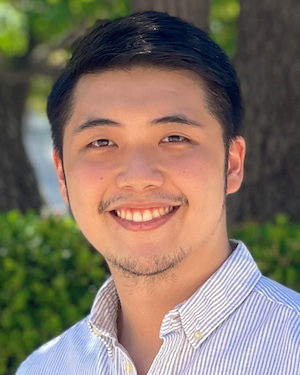
Where Did the Time Go? ⟩
March 20, 2022, by Marvyn
Life Hacks School/Life Balance
And just like that Spring break is over. Have you ever wondered where the time went? It feels so elusive but also always so present. At one point you feel like you have had an abundance of it, but now it feels like I have so little time.
I remember back when I started in the Post-Professional Master’s program last August, my mind was comforted by the fact that I have a lot of time to spend in this program and that I will have so much to learn and experience. But while the latter remains to be true, I feel like I am now running out of time. It feels like I just landed in Los Angeles yesterday but here we are. The one year has already flown by and we are already in the last few stretches before commencement! What is this sorcery??
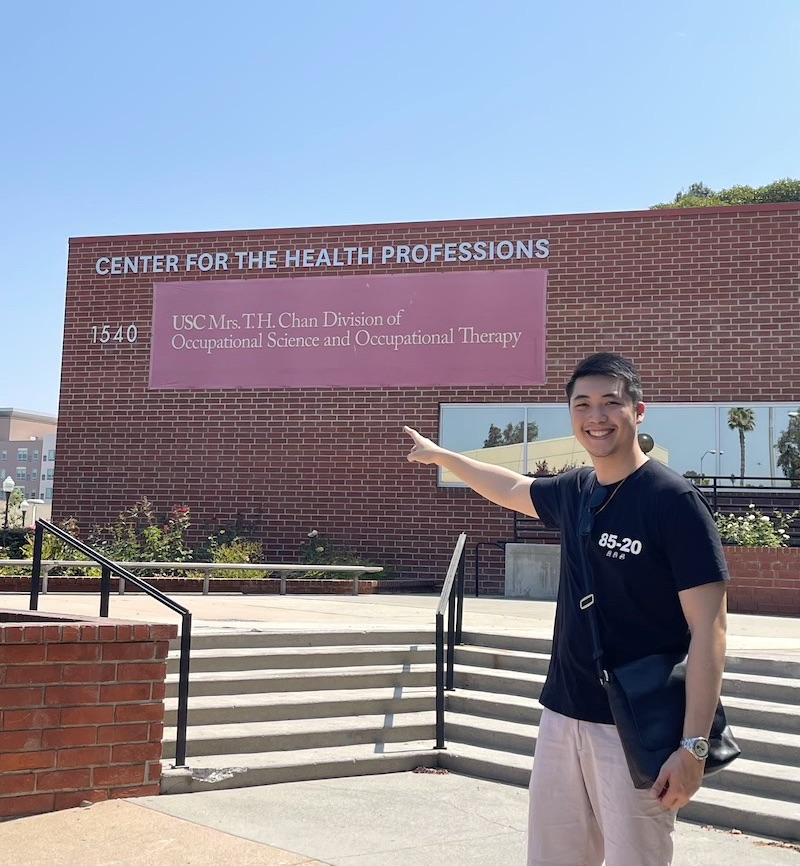
My first ever visit to USC Chan!
Can you find your time back?
All my life I knew time was precious. If you knew me, I have had a love-hate relationship with time. Every time someone asks me, “If you gain a superpower, what would it be?” My response will always be to be able to control time. I find that whenever I feel like I’m chasing after time and making the most out of my experience here at USC, I find myself creating the best memories. You have this sort of pressure to do the best and to feel the best. At least, that’s how I see it personally. Maybe, as you read this, you feel kind of the same way too! But there is also a part of me that wishes I had more time, that I can freeze/rewind and do more. Could I ever find more time?
Look back. Reflecting on your experiences in the past is your own trophy. Whatever you have done and haven’t done, these are the points that you can live by in the present. Personally, I have had the best year of my life being here at USC. I made so many new friends and lifelong connections, and I had the best experiences and memories that I will never trade anything for the world. When I look back at what I have done so far in my time here at USC, I have never been prouder with what I was able to do, and I look forward to what I will be doing in the future.
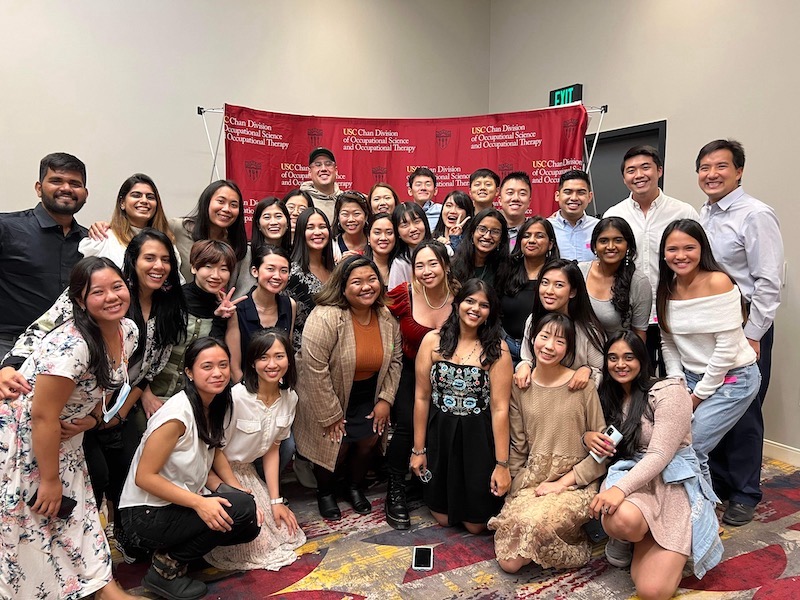
Making memories with my PP-MA class on our first Friendsgiving! Shoutout to Global Initiatives and everyone else involved!
Living in the present. While it is okay to feel like you’re chasing after time and that you have so much more things you want to do, I’ll use this opportunity to remind myself that I should live in the present experiences and bask in its warmth and joy. I have been so worried about the time I have left and the things I want to do that I forget sometimes to enjoy the things that I currently have! Like everyone says, time is something you never get back. So, while you have it, enjoy it.
Look forward to what’s to come. Now, this might contradict what I have already said but having something to look forward to is a great thing to think about as well. Maybe, in a sense, creating an objective to work towards is beneficial for your time as well! If you think about it, if you have a goal you want to achieve with the “limited” time you have left, it allows you to seize each day with the best memories.
But also, don’t get me wrong, I don’t want to pressure anybody to always do something. Sometimes doing nothing and really taking your time is completely fine as well! There is a fine line between healthily pressuring yourself while keeping your sanity in the midst of every choice you have.
This blog post has been, in a way, cathartic for me because of the current pressure I am feeling with the limited amount of time I have left here in my program. I am comforted by the fact that I have reflected upon my experiences and came up with the three points I mentioned. If you are feeling almost the same way as I have, I hope this helps you too.
⋯
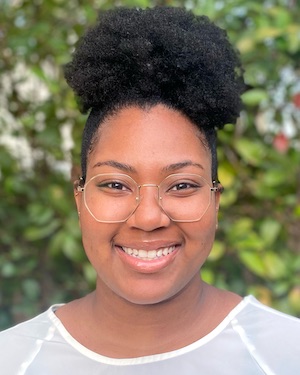
A Day In My Life ⟩
February 8, 2022, by Kayla
School/Life Balance What are OS/OT?
My day starts bright and early. I wake up at 6:30AM, throw on my scrubs, take out my dog, Buffy, throw on my winter coat, scarf, and gloves (it’s the middle of Chicago winter) and head out the door around 6:50AM! I am not a morning person, so I have this process down to a science!
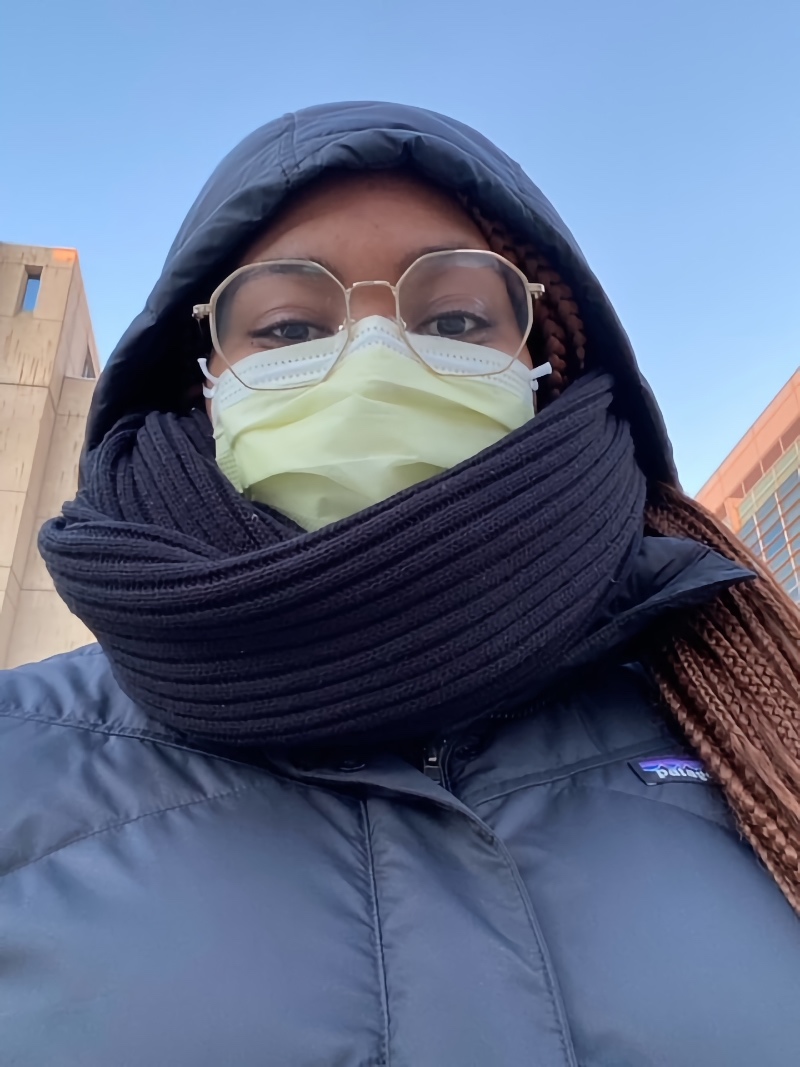
Bundled up to face the cold!
After my commute, parking, and making my way into the hospital I sit down to chart review my patients at about 7:40AM. I decide which patients I want to see for the day, look for new consults, and get well-versed on what brought everyone into the hospital! (This part is one of my favorites as an acute care therapist, learning about all of the different diagnoses and procedures is so interesting!)
At 8AM I meet with my residency site preceptor to finalize my caseload, ask questions, and set up times to complete mentorship sessions throughout the day. At 8:15 we have our OT department huddle (via Zoom as to be covid friendly) and then get started with our day!
Between 8:20 and 9:00AM I create a general schedule to follow based on priority and reach out to my PT partners to schedule any co-treats for the day.
At 9AM . . . My absolute favorite part begins, seeing my patients! I typically see patients from 9-12PM and then sit down for lunch and to complete some notes from my morning sessions until 1-1:30 PM! (Sometimes the other therapists/fieldwork students host in-services during lunch, so it’s an opportunity to learn while I eat!)
From 1:30-3PM I see my afternoon patients (admittedly, it is hard to get back into the swing of the fast-paced nature of acute care with a full tummy after lunch). At 3 o’clock I meet with my preceptor to go over my patients from the day and plan for the next day, ask any questions that came up during my treatment, and complete my documentation.
I typically get home between 5-6PM (after work traffic is a monster). When I get home I take a second to breathe and reflect on the day before jumping into my tasks for the evenings. Each evening looks a little different based on the day. Some days I have 2-3 hours of class, a couple of meetings, or 1-2 hours of homework to stay current and on track with OTD course curriculum. I typically complete work until about 9PM and then wind down for the day! And of course, an hour or so of tiktok is ~usually~ in the cards before turning in around 11PM.
On days that I don’t have work, class, or meetings, I love to Facetime with my friends and family back home, go on a good therapeutic trip to Target, or try new restaurants in my neighborhood! While my days are long and sometimes very tiring, they are filled with everything I expected from an acute care residency.
Pro tip: Find a current resident working in a similar site/practice context as you and pick their brain about their daily schedule/workflow. It’s so SO helpful in beginning to conceptualize what your upcoming year will look like and help you plan and prepare accordingly!
⋯
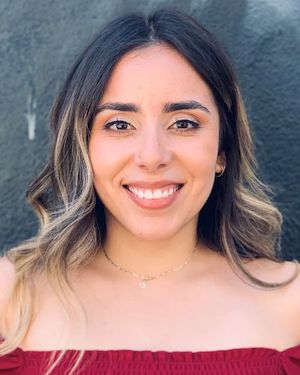
Survivin’ ~N~ Thrivin’ ⟩
October 21, 2021, by Silvia
Life Hacks School/Life Balance
Ok, full disclosure, I was not thriving last week . . . or the week before that.
Sometimes life is just hard, you know. You may have big assignments due, an application to submit, an exam (or two) to take, and work deadlines to meet — all while you’re trying to resolve family issues, your printer decides to stop working, your computer crashes, and your ex has the audacity to text you and ask how you’re doing. Two or three of these things I can handle, but all of them together felt a little excessive.
And here’s the thing about me, I do not handle being stressed or overwhelmed very well. My go-to coping strategy is to eat ice cream with under-baked cookies and watch Mulan, which is not exactly the answer I gave during my OTD interview — but that’s besides the point. What I am trying to say is that the first half of October was rough. I had so much going on that I felt like I was just doing and not being. Honestly, a lot of us felt that way (per the brief research I conducted, aka my “Surviving vs. Thriving” Instagram poll) and maybe you are feeling that way right now. If you are, I want to say this: there is more to life than this moment, let it go and let it be.
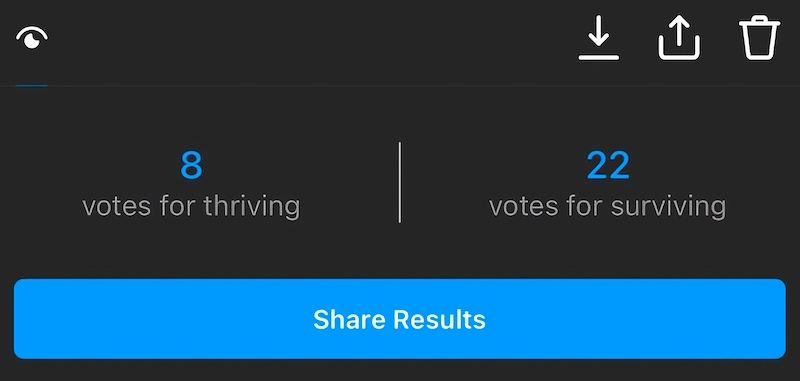
Data from my very (non) scientific research
Like many things, this is easier said than done, I know. It took me having a mini emotional and mental breakdown to finally give myself some grace. I don’t always have to have it all together, and neither do you, but I do think that we should always be kind to ourselves — and this is something I am working on. On the days where I feel defeated, I stop and tell myself that there is more to life than what I am feeling right now, I think about all the things that make me happy and give me life, and I give myself credit for how far I’ve come. I affirm myself.

How it started vs. How it’s going . . .
When I do this, I realize that I truly am thriving. I am living in a new city, meeting beautiful people, making new friendships, halfway through the master’s program, and pursuing a doctorate (ok, this one is contingent on being accepted, but speak into existence ok).
Life is about perspectives, and how you choose to look at things may shift the way you view surviving and thriving.
⋯






